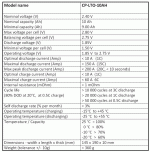NARRATION
Around the world, the race has been on to develop a better battery than the current lithium configuration. And some of the top contenders are right here in Australia, such as Professor Thomas Maschmeyer. He believes he’s just invented the battery that will change everything.
Professor Thomas Maschmeyer
This is our battery, it’s based on zinc bromide. So, we’ve got the two electrodes here and what’s called a coin cell, and then the key part is that we have a gel that we put on top of the electrode.
NARRATION
Zinc-bromine flow batteries exist already. They use a liquid to transport the changed particles, which has its advantages, but they’re too big to fit in a phone or computer. Thomas’ breakthrough idea was to take a zinc-bromine battery, but instead of a liquid, use a gel. So why a gel? Well, it’s neither a liquid nor a solid, but you get the advantages of both. And that includes being able to move ions quickly, so you get rapid charging.
Dr Jonica Newby
So how quickly does it charge?
Professor Thomas Maschmeyer
We can get it down to just a few minutes.
Dr Jonica Newby
Really? So you’re saying I could charge my phone in just a few minutes.
Professor Thomas Maschmeyer
In just a few minutes. And not just your phone, but also your car.
NARRATION
Already the batter is running at 90% efficiency, which is higher than in your mobile phone. It has a longer lifetime and zinc is cheaper than lithium.
Dr Jonica Newby
So if this becomes commercialised, it’s cheaper, you can charge it faster, it lasts longer…
Professor Thomas Maschmeyer
And the gel is made out of a fire-retardant material.
Dr Jonica Newby
It’s fire-retardant as well?
Professor Thomas Maschmeyer
That’s correct.
Dr Jonica Newby
That’s pretty impressive.
Professor Thomas Maschmeyer
Well, thank you very much.
NARRATION
But perhaps its biggest potential lies in the fact that being a gel, it’s bendy. It won’t crack. And that’s what excites this industry. The potential is for flat pack zinc-bromine batteries to be included in the very fabric of buildings. Lendlease is just one of the big companies that’s been inspired by Professor Maschmeyer’s vision.
Steve McCann
It’s very exciting, his work. Our vision is to create the best places. To do that, you have to continue to innovate. And we’re thinking about things like working with Professor Maschmeyer to use prefabricated wall segments, for example, as, effectively, battery storage or power storage facilities. So imagine that in a large scale and the impact that will have on the emissions from the built space, which is a very significant impact on the environment.





